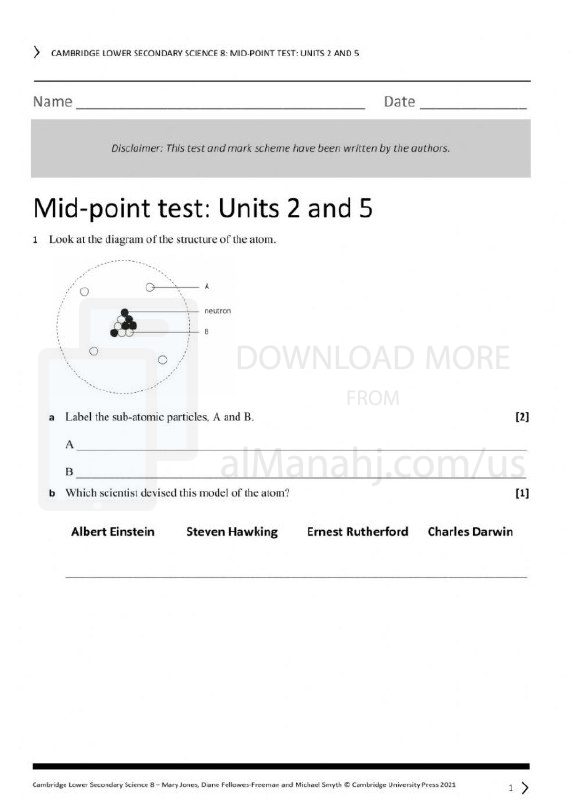| You are here: Almanahj Website ⇒ American curriculum ⇒ 8th Grade ⇒ Chemistry ⇒ Info Chemistry and r | ||
|---|---|---|
Worksheet about Chemistry and reactivity | ||
|---|---|---|
| Subject: Chemistry | ||
| 8th Grade | ||
| Info Chemistry and r | ||
| Year: 2023/2024 | ||
| Size: 367KB | ||
| Number of clicks: 63 | ||
| Publish date:November 06, 2023 | ||
| Added by: Eman | ||
| Last download date: 2024-08-29 08:17:30 | ||
| Updated by: Eman9966 on 2023-11-06 05:27:23 | By: theodor Thu Uyên Nguyễn | |
| File info: Chemistry and reactivity are interconnected concepts that explore the behavior of substances and how they undergo chemical reactions. Here is a description of chemistry and reactivity: Chemistry is the scientific study of matter, its properties, composition, structure, and the changes it undergoes. It encompasses various branches, including organic chemistry, inorganic chemistry, physical chemistry, and analytical chemistry. One fundamental aspect of chemistry is the understanding of how atoms and molecules interact with each other. Reactivity, in the context of chemistry, refers to the ability of substances to undergo chemical reactions and transform into new substances. Reactivity is influenced by factors such as the nature of the elements or compounds involved, their electronic configurations, and the conditions under which the reaction occurs, such as temperature, pressure, and the presence of catalysts. Chemical reactions involve the breaking and forming of chemical bonds between atoms or molecules. Bonds are formed through the sharing or transfer of electrons, and the rearrangement of atoms leads to the creation of new substances with different properties. The reactants are the starting materials, while the products are the substances formed as a result of the reaction. Chemical reactivity can vary widely among different substances. Some substances are highly reactive and readily undergo reactions, while others are more stable and less reactive. The reactivity of a substance can be determined by factors such as its electronic structure, the presence of functional groups or reactive sites, and the energy required to break or form chemical bonds. Understanding the principles of reactivity is crucial in predicting and controlling chemical reactions. Chemists use this knowledge to design and optimize processes in various fields, including pharmaceuticals, materials science, energy production, and environmental science. By manipulating reaction conditions and employing catalysts, chemists can enhance reactivity, improve reaction rates, and achieve desired outcomes. Reactivity is not limited to chemical reactions between different substances. It also encompasses the behavior of substances under specific conditions, such as their reactivity with acids, bases, oxidizing agents, or reducing agents. These interactions help determine the chemical and physical properties of substances. Chemical reactivity is a dynamic and complex field that continues to be explored and expanded. Advances in understanding reactivity contribute to the development of new materials, technologies, and processes that benefit various industries and areas of scientific research. In summary, chemistry and reactivity are intertwined concepts that involve the study of matter and its transformations. The understanding of reactivity enables scientists to predict, manipulate, and harness chemical reactions for practical applications and the advancement of scientific knowledge. | ||
| Downloading link Worksheet about Chemistry and reactivity |
|---|
|
1699248341.pdf
The file is being prepared for download
|
| File images |
|---|
 |